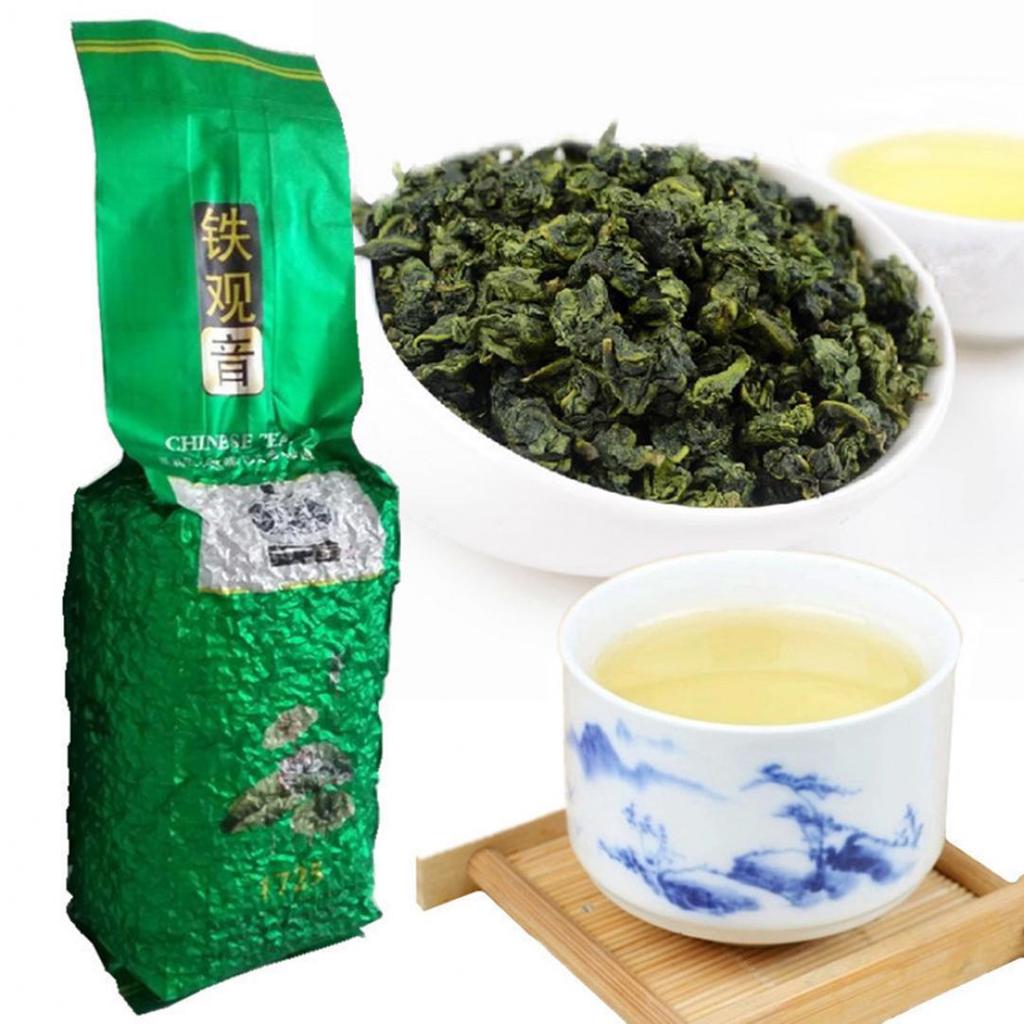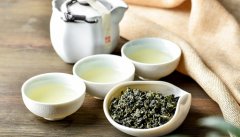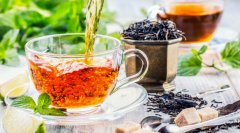What kind of oolong tea does Tieguanyin belong to? Does Tieguanyin contain caffeine? Why is it good to drink?
Oolong tea, as a panacea, has been used in traditional Chinese medicine for centuries to treat everything from inflammation to metabolism. In recent years, many beneficial characteristics of oolong tea have been supported by scientific research. What is oolong tea? Like other types of tea, including black tea, green tea and white tea, oolong tea is made from the leaves of tea trees native to southwest China and northeastern India. Oolong tea is partially oxidized, and the degree of oxidation is between black tea and green tea. These unique teas are usually produced by specialized varieties that have been developed for decades. Oolong tea is usually rolled tightly into a ball, and gradually unfolds with the soaking of the tea, which is suitable for multiple brewing. These teas tend to be lighter than black tea, but fuller than green tea, with floral and botanical flavors. About Tieguanyin oolong tea, it gets its name from Guanyin, which is a Buddhist Bodhisattva related to compassion. This kind of oolong tea comes from eastern China and is famous for its floral and orchid flavor. Thin Guanyin is said to be the most famous and favorite oolong tea in China. This kind of tea is grown in the high altitude and cool mountain areas of Fujian Province, China. After harvest, the leaves are carefully processed into tight balls. When soaked, the black curly Guanyin leaves brighten and unfold, releasing the aroma and smell of the flowers. The brewed tea is golden in color and slightly sweet in taste. Tieguanyin tea provides an excellent source of sustained energy, both moderate caffeine content and high levels of vitamins, amino acids, and antioxidants that contain polyphenols. Fine Quan Yin Oolong Tea caffeine content Fine Quan Yin contains the right amount of caffeine (less than half of a cup of coffee caffeine). Caffeine content in tea is affected by several factors, including: tea varieties-most oolong teas are produced by Chinese tea varieties, which tend to contain less caffeine than tea varieties Asmi. Water temperature-We recommend that the water for oolong tea should be steamed instead of boiling (about 195 degrees). The higher the water temperature, the more caffeine in the tea. Soaking time-we recommend that you soak fine Guanyin for about 2-3 minutes for the first time. The longer the tea is brewed, the more caffeine will be in the coffee. Multiple brewing-like many types of oolong tea, refined Guanyin can be brewed many times to enjoy the nuance and taste of the tea in a few steps. This means that each brew of tea is milder and contains less caffeine.

The benefits of fine Guanyin oolong tea Fine Quan Yin contains many benefits of oolong tea. These include: good for the heart-oolong tea has been shown to help reduce the risk of cardiovascular and coronary artery disease, and if you are looking to improve your heart health, oolong tea is a good complement to a healthy lifestyle. It's good for your skin-oolong teas like Fine body Guanyin contain anti-allergic ingredients that can help eliminate acne and skin problems. Tea is also very moisturizing and good for skin health! Improve cognitive function-like other types of tea, fine Quan Yin contains caffeine, which increases your energy, as well as L-theanine, which has calming and stress-relieving effects. Caffeine and theanine can help improve your intelligence and help you concentrate. Boost metabolism-studies have shown that drinking oolong tea can help speed up metabolism, increase energy consumption, and maintain a healthy weight. Disease prevention-Oolong tea contains antioxidants and polyphenols, which help promote cell health and prevent degenerative diseases such as cancer and Alzheimer's disease. Good for bones-drinking oolong tea like Fine body Guanyin helps prevent osteoporosis, a degenerative bone disease that increases the risk of fractures and fractures. Oolong tea can also help increase bone mass and bone strength and reduce the likelihood of injury. Good for teeth-oolong tea has been shown to help reduce plaque and keep teeth healthy and bright. Oolong tea also contains natural fluoride, which helps prevent tooth decay and promote oral health. Anti-inflammatory-Oolong tea contains anti-inflammatory ingredients that can help relieve pain and reduce inflammation. It's good for your microbiome-it's made up of microbes that live in the digestive tract and can help fight pathogens and strengthen the immune system. Oolong tea has been shown to help regulate intestinal microbiota by increasing the level of beneficial microorganisms. Help digestion-A cup of oolong tea can help you digest rich food and relieve stomach problems. To prepare Tieguanyin oolong tea, we recommend that you use teapot, brewer, or tea filter. These brewing methods make the tea leaves have enough room to expand in the process of soaking, thus making the cup richer and more delicious. This is especially important for oolong tea, because tightly rolled tea leaves can expand to many times their original size during soaking. Use about one teaspoon of tea for every six ounces of water in your pot or cup. Heat the water to steam but not boil, reaching a temperature of about 195 degrees. Soak for two to three minutes, then enjoy! Like many oolong teas, fine Quan Yin can be infused many times. Each time you make tea, the tightly rolled tea leaves will stretch a little bit, and you will experience different notes and nuances in the tea. Refined Quan Yin also often uses the traditional preparation method of Kungfu Tea, where a small teapot is used to brew a lot of short continuous brewed tea. Kungfu Tea's ceremony is to allow you to focus on and appreciate high-quality tea.
Important Notice :
前街咖啡 FrontStreet Coffee has moved to new addredd:
FrontStreet Coffee Address: 315,Donghua East Road,GuangZhou
Tel:020 38364473
- Prev

What is the effect and effect of drinking Tieguanyin regularly on the body? Count the ten benefits of Tieguanyin
The benefits of oolong tea Oolong tea has many beneficial effects! These include: 1. Can it help keep your heart healthy? drinking oolong tea can help ensure that you have a healthy heart and cardiovascular system. Studies have shown that drinking oolong tea is beneficial to patients with coronary heart disease. In addition, drinking tea can also reduce the risk of cardiovascular disease. If you are looking for ways to improve your heart health, have a drink often
- Next

General situation of Variety Information of Assam Black Tea brewing guidelines and efficacy of Assam Black Tea
About Assam Black Tea Assam is a nutritious black tea grown in Assam, India. This kind of tea is usually one of the main ingredients of popular mixed breakfasts, such as English breakfast and Irish breakfast. Although Assam can be drunk alone because it is a bold, astringent cup, it is strong enough.
Related
- A complete list of coffee bean names and their meanings! What is Yejia Shefi coffee? Where is Mantelin coffee?
- What grade does Arida Manor Kaduai coffee beans belong to? What treatment is Arida ASD slow anaerobic sun exposure?
- The milk tea cup becomes smaller?! Overlord Tea Girl launches a new "Return to Yunnan" series
- Accused of selling counterfeit and high-priced coffee beans! Well-known boutique coffee brand "Oukelao" bowed and apologized!
- How to make espresso dumplings? Can I eat coffee and glutinous rice balls together?
- Save the unformed and stagnant powder cakes in one second! What is the problem with stagnant water in the powder bowl of the espresso machine?
- What does hand-brewed coffee stop mean? Why is it not recommended to make coffee by hand?
- Is it normal to smell like coffee? Why does coffee smell like alcohol? What's wrong with the strong smell of cold extract ice dripping ice brewed coffee?
- How to solve the problem that hand-brewed coffee extraction takes too long? Why is the water flowing so slowly when making coffee?
- The main points of making Australian white coffee, the proportion details, how does Australian white properly foam and blend the flowers?

